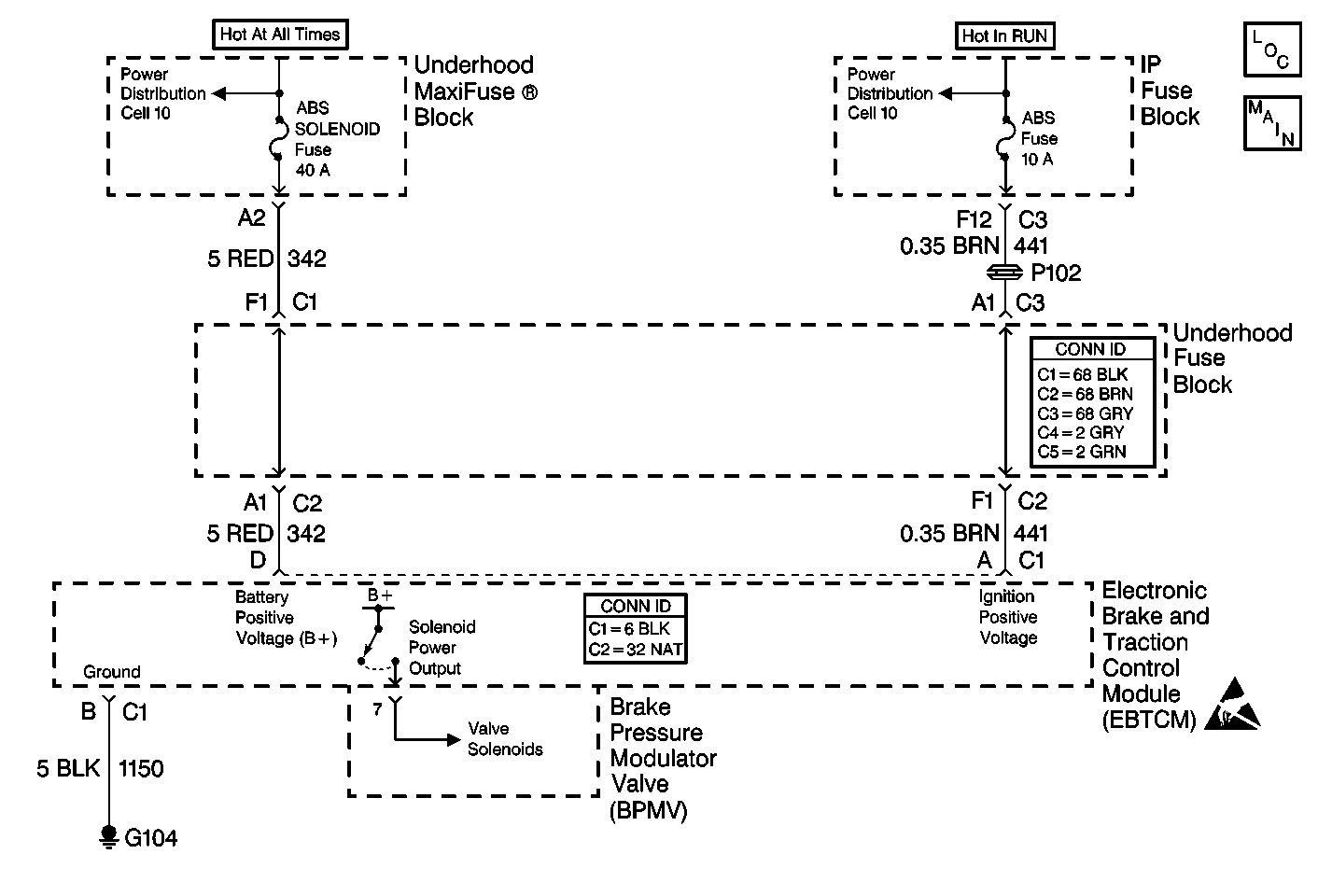
Circuit Description
This circuit monitors the voltage level available to the EBCM/EBTCM. If the voltage drops below 10.5 volts, full performance of the ABS/TCS cannot be guaranteed. During ABS/TCS operation, there are several current requirements that will cause battery voltage to drop. The voltage is monitored prior to ABS/TCS operation in order to indicate good charging system condition and also during ABS/TCS operation when the voltage may drop significantly.
Conditions for Setting the DTC
The vehicle speed is greater than 8 km/h (5 mph) and the battery and ignition voltages are less than 10.5 volts
Action Taken When the DTC Sets
| • | A DTC C1236 is stored |
| • | The ABS/TCS is disabled |
| • | The ABS and TRACTION OFF indicators are turned on |
Conditions for Clearing the DTC
| • | The condition for the DTC is no longer present and you used the scan tool Clear DTC function. |
| • | The EBCM/EBTCM does not detect the DTC in 50 drive cycles. |
Diagnostic Aids
| • | Thoroughly inspect the wiring and the connectors. Failure to carefully and fully inspect the wiring and the connectors can result in misdiagnosis. Misdiagnosis may cause replacement of parts without repairing the malfunction. |
| • | Inspect for other low voltage conditions. |
| • | Test the charging system. Refer to Charging System Check in Engine Electrical. |
| • | The following conditions are other possible causes of low system voltage: |
| - | A charging system malfunction |
| - | Excessive parasitic drain |
| - | A weak battery |
| - | A faulty system ground |
| • | If an intermittent malfunction exists, refer to Testing for Electrical Intermittents in Wiring Systems. |
Test Description
The numbers below refer to the step numbers on the diagnostic table.
Step | Action | Value(s) | Yes | No |
|---|---|---|---|---|
1 | Was the ABS Diagnostic System Check performed? | -- | Go to Diagnostic System Check | |
2 | Inspect the Charging System. Refer to Charging System Check in Engine Electrical. Is the charging system OK? | -- | Go to Charging System Check in Engine Electrical | |
3 |
Is there any evidence of damage or corrosion? | -- | ||
Is the resistance less than the specified value? | 2 ohms | |||
5 | Measure the voltage between the J 39700 terminals B and D. Is the voltage greater than the specified value? | 10.5 V | Go to Battery Charging in Engine Electrical | |
Is the voltage greater than the specified value? | 10.5 V | Go to Battery Charging in Engine Electrical | ||
7 | Repair as necessary. Refer to Wiring Repairs . Are the repairs complete? | -- | Go to Diagnostic System Check | -- |
8 | Repair the open or high resistance in CKT 1150. Refer to Wiring Repairs in Wiring Systems. Is the circuit repair complete? | -- | Go to Diagnostic System Check | -- |
9 | Replace the EBCM/EBTCM. Refer to Electronic Brake Control Module Replacement . Is the replacement complete? | -- | Go to Diagnostic System Check | -- |
